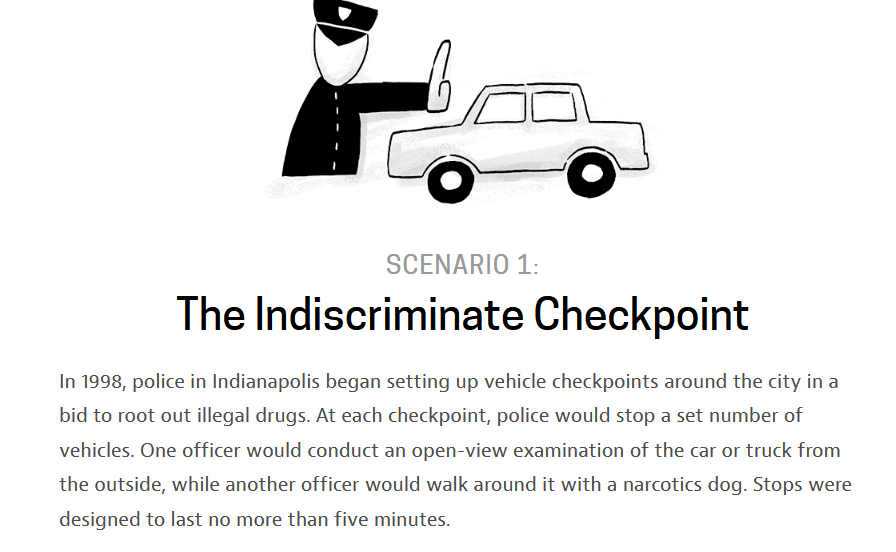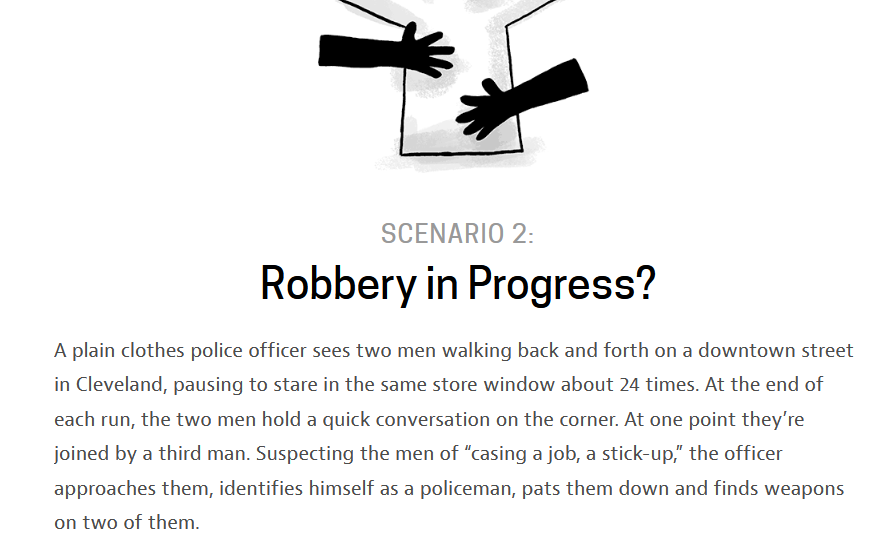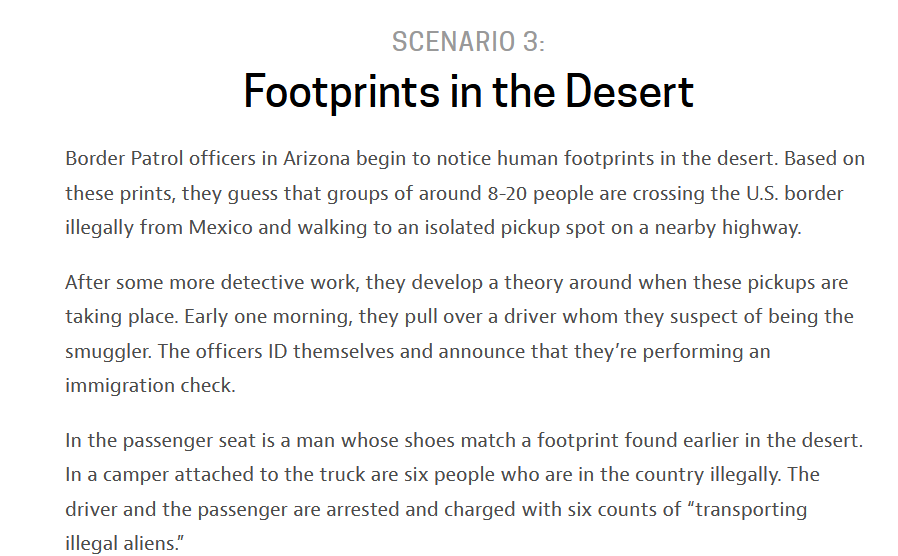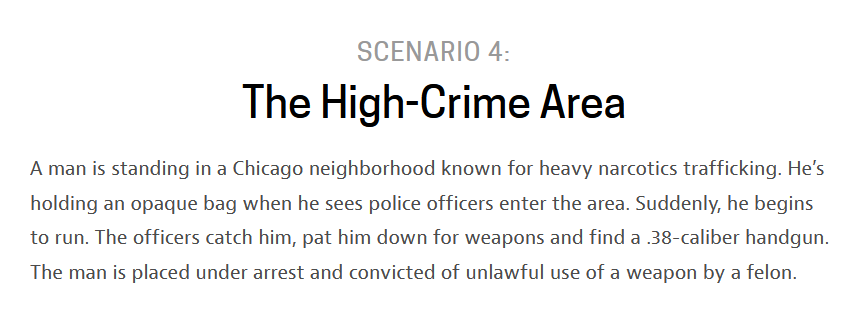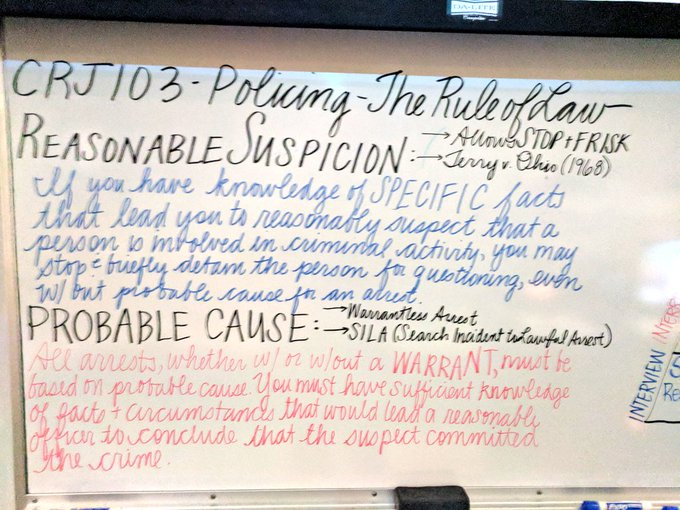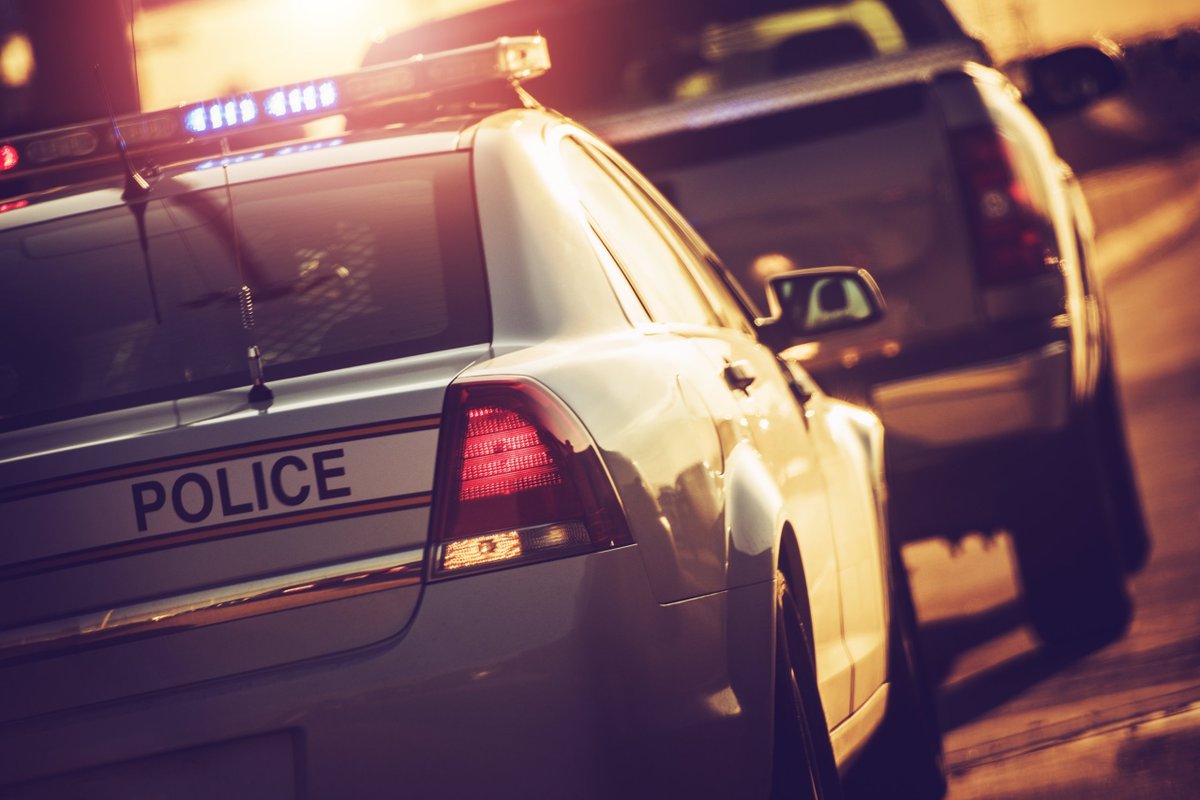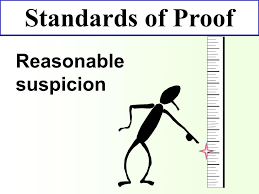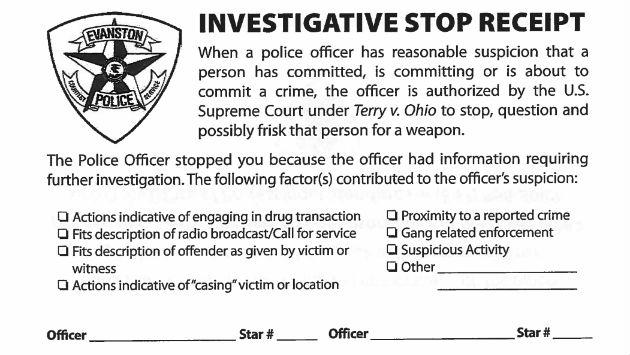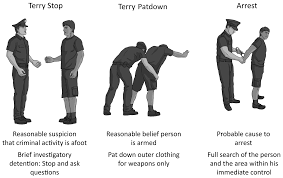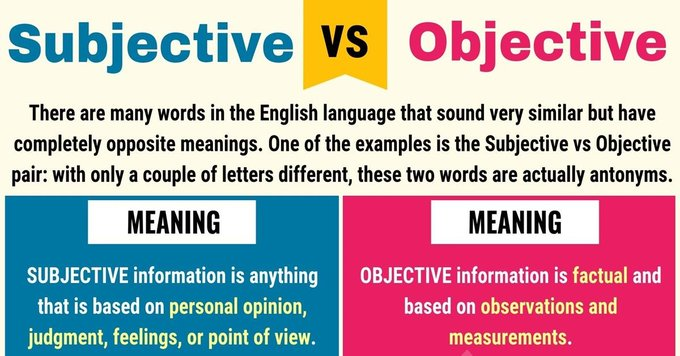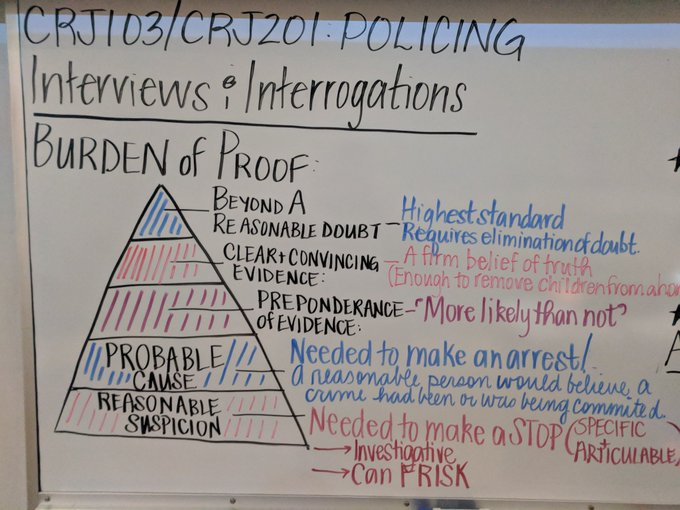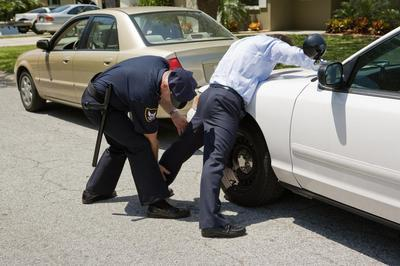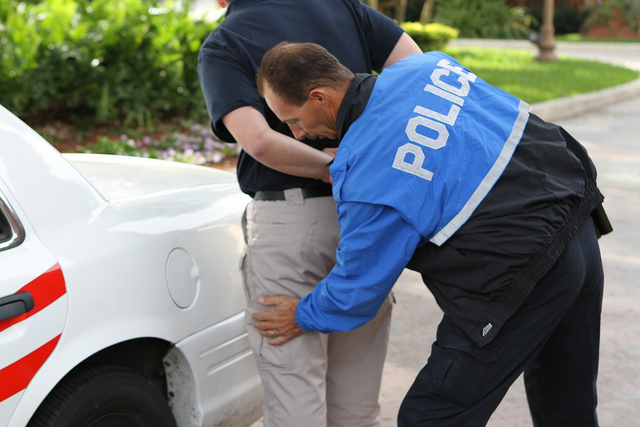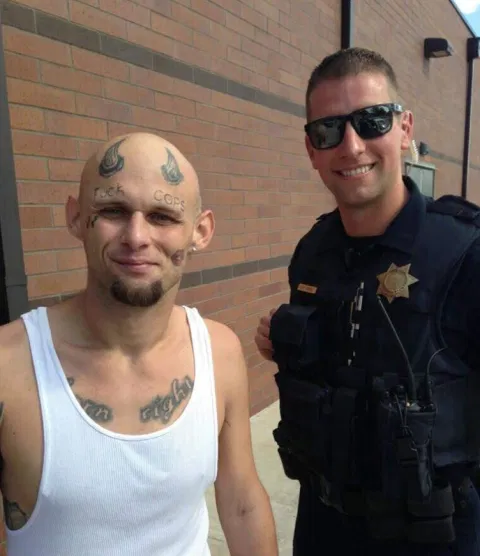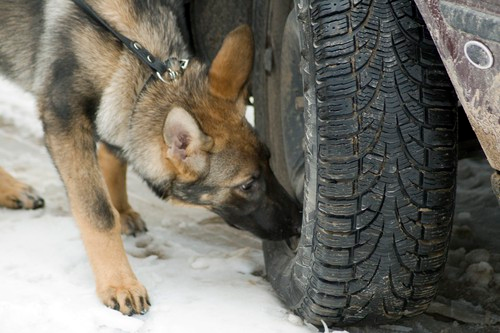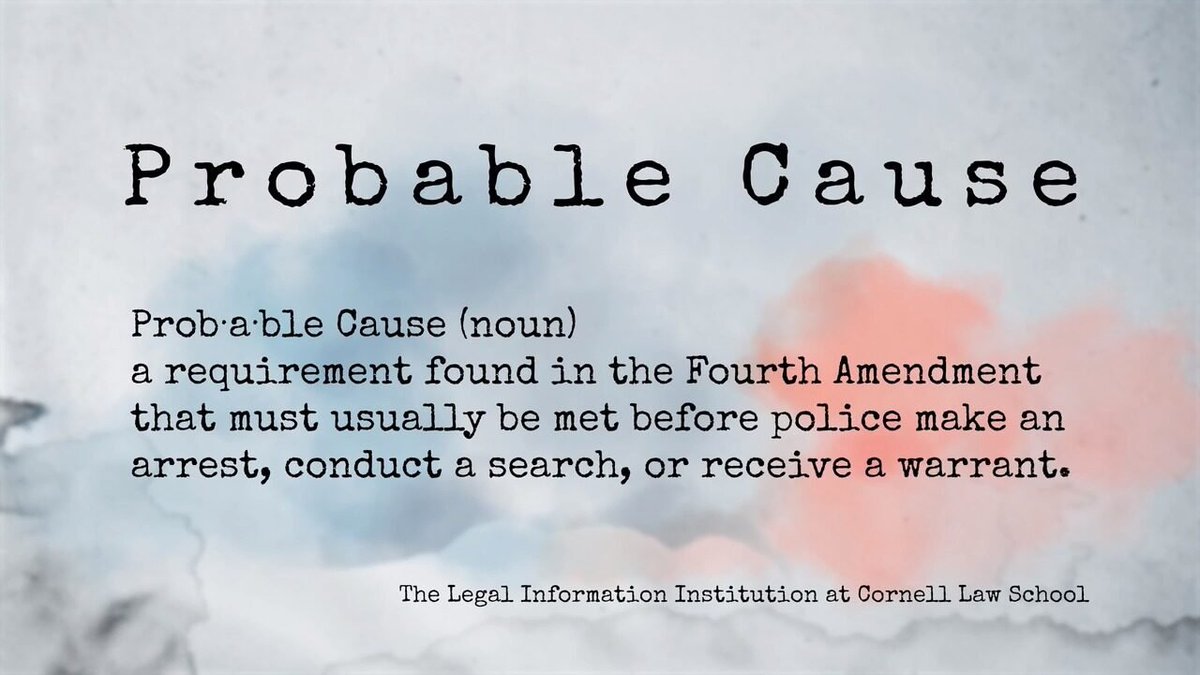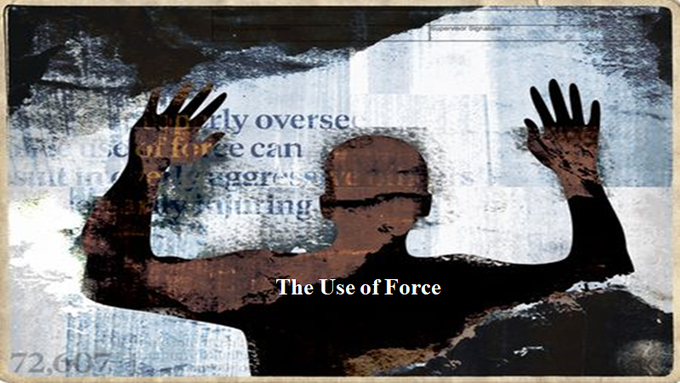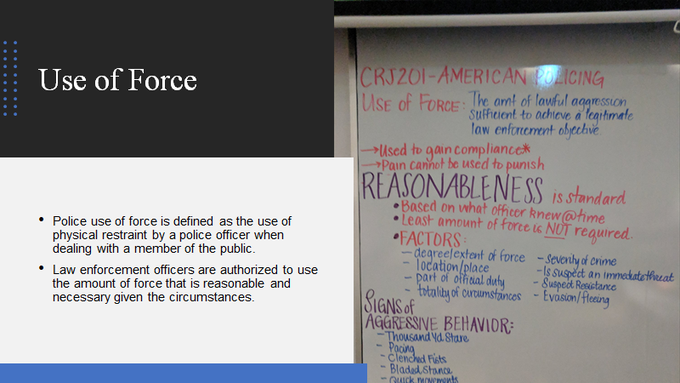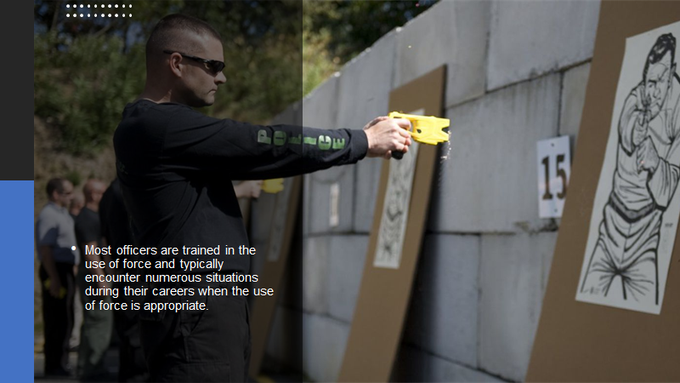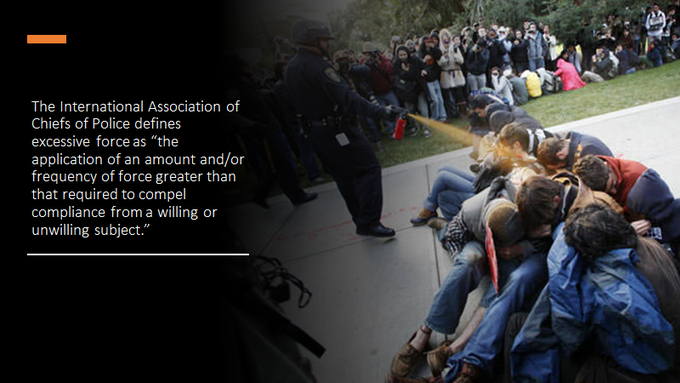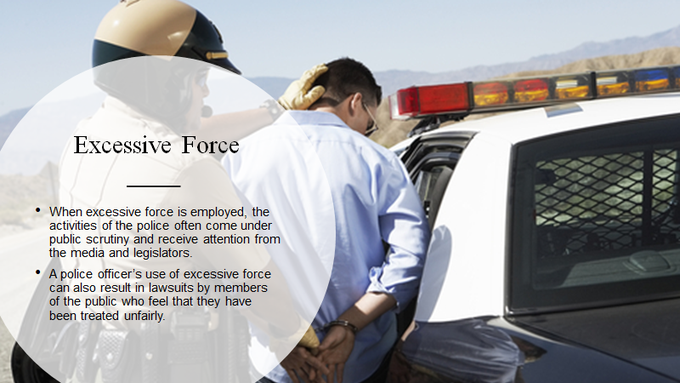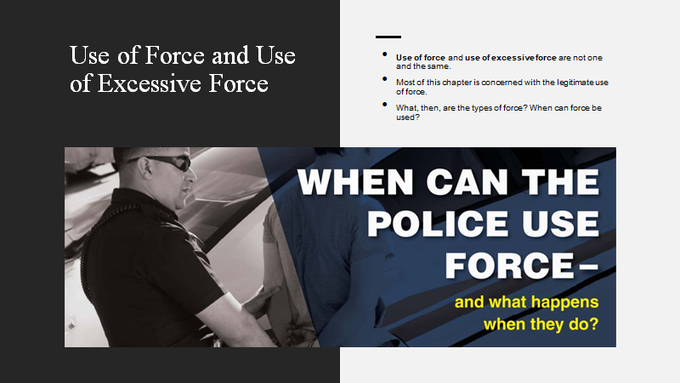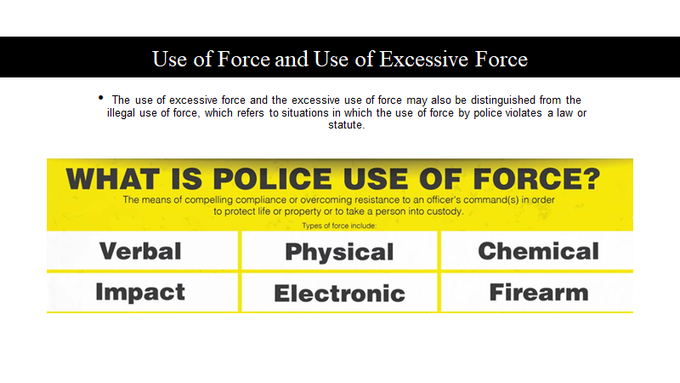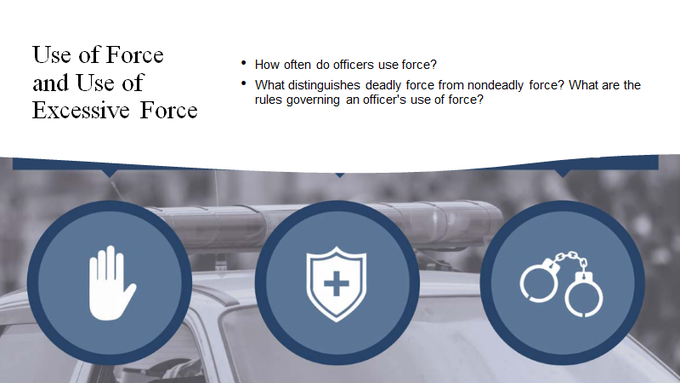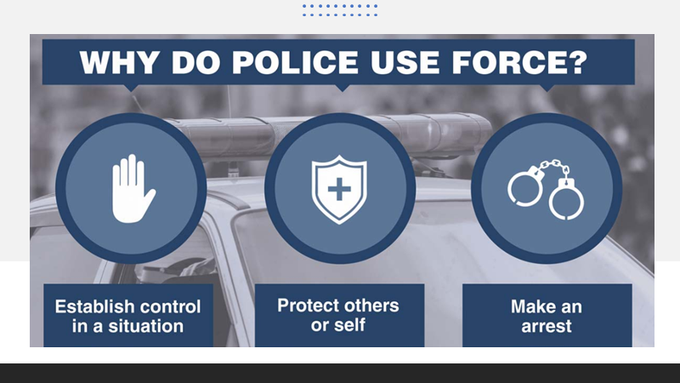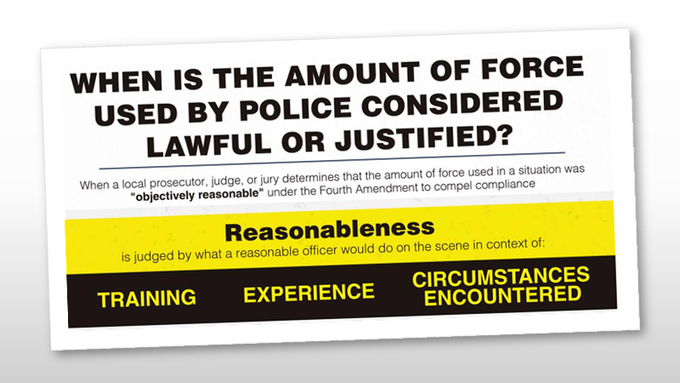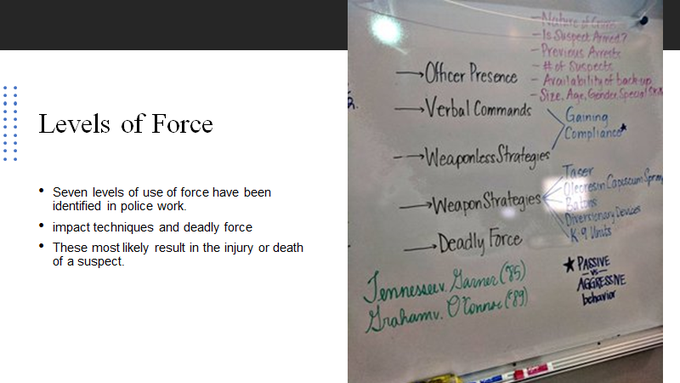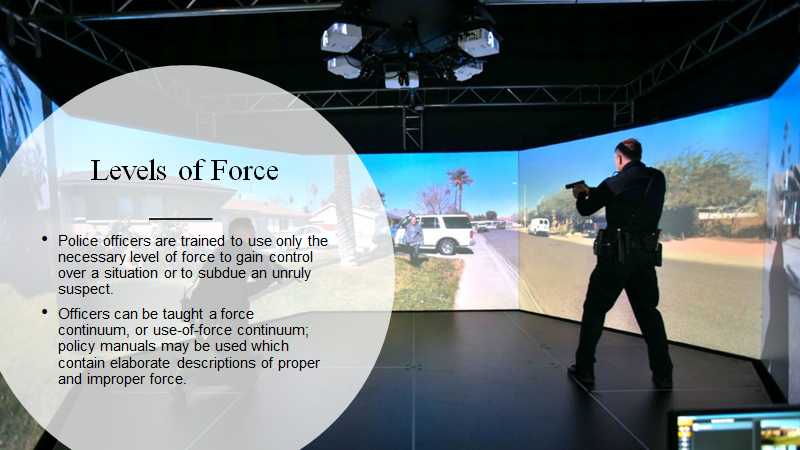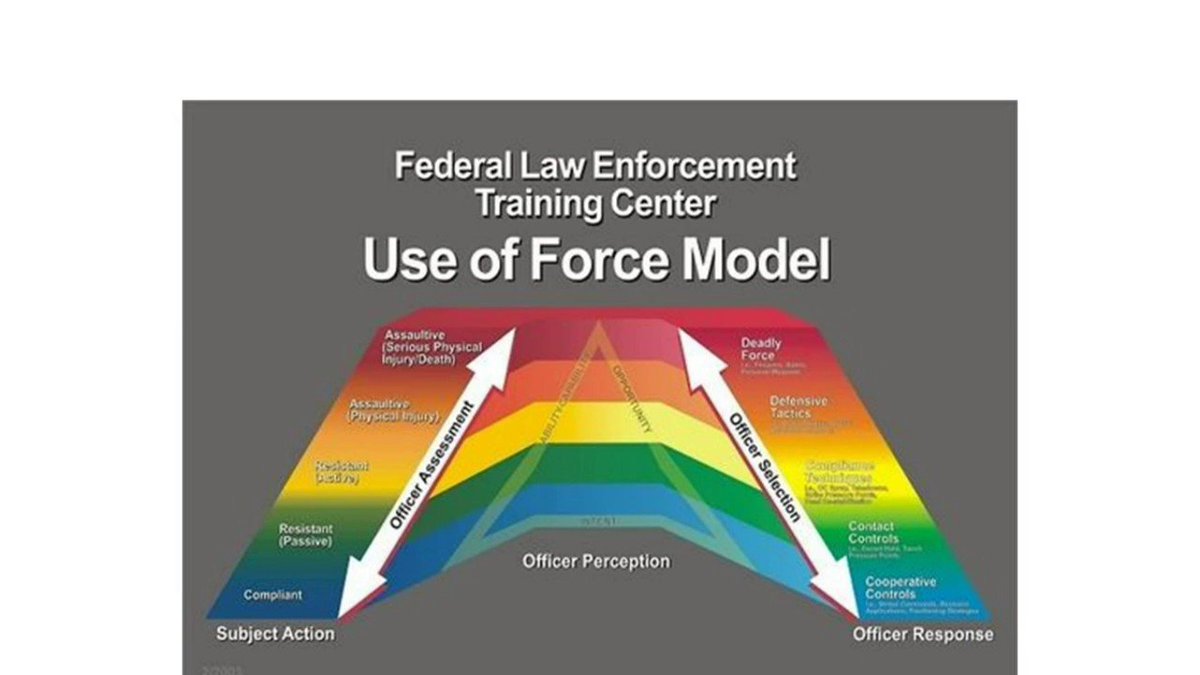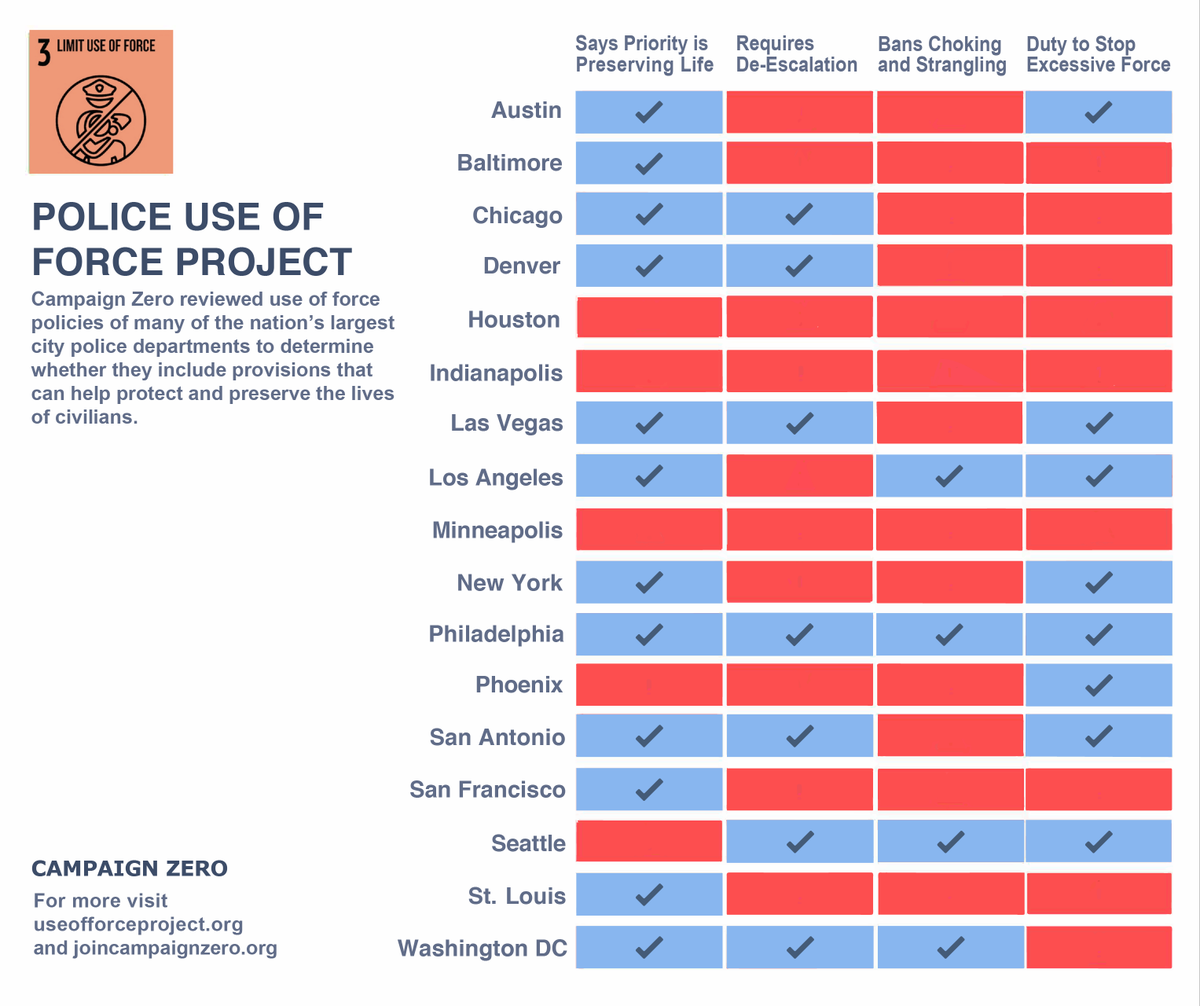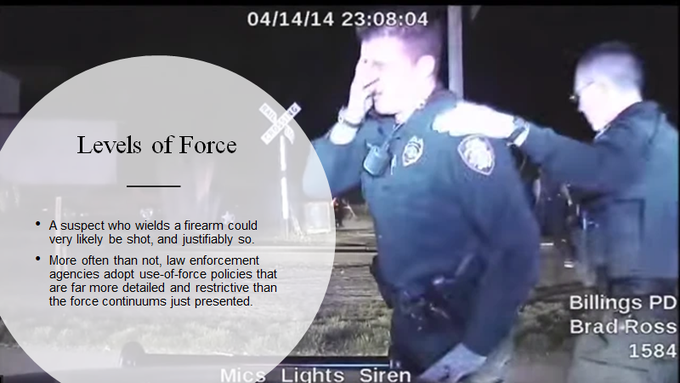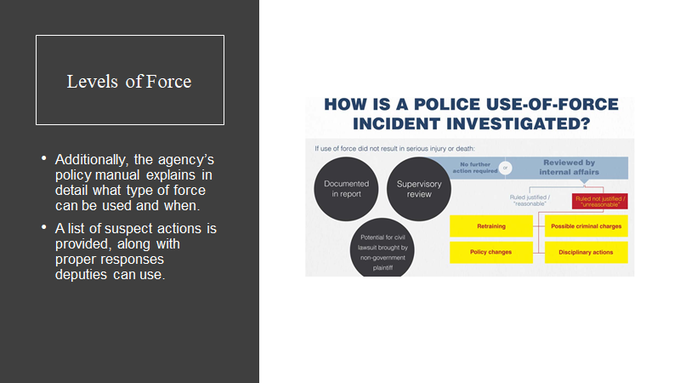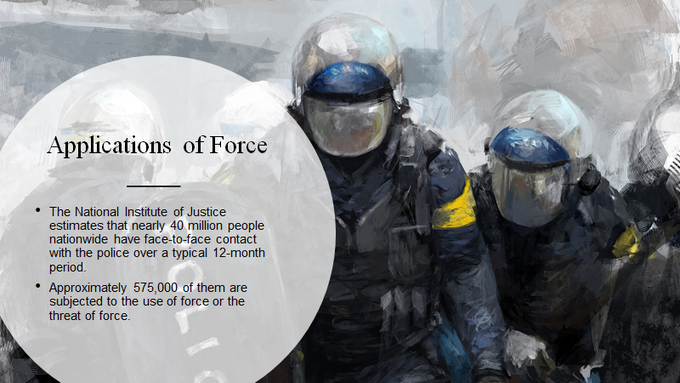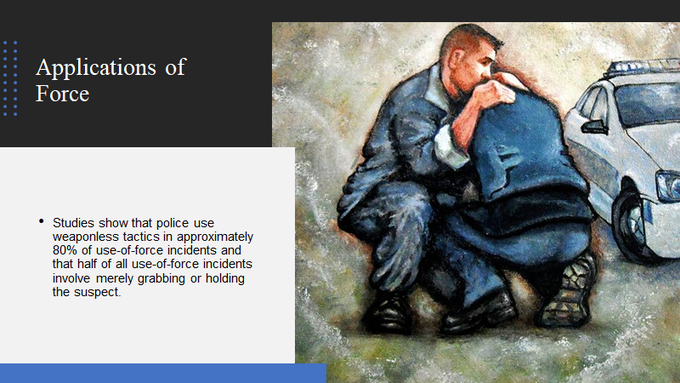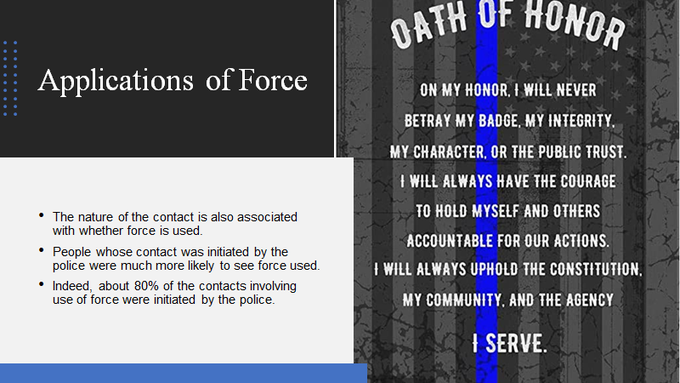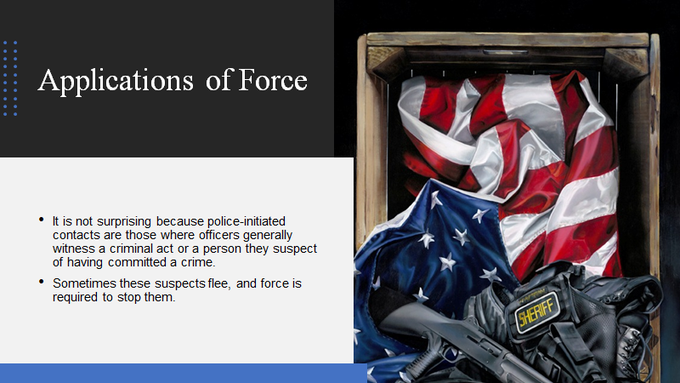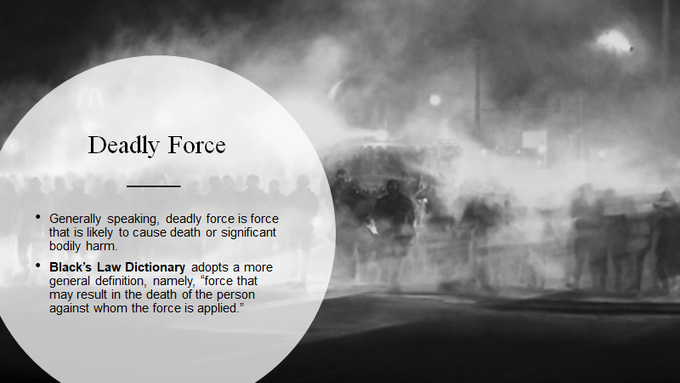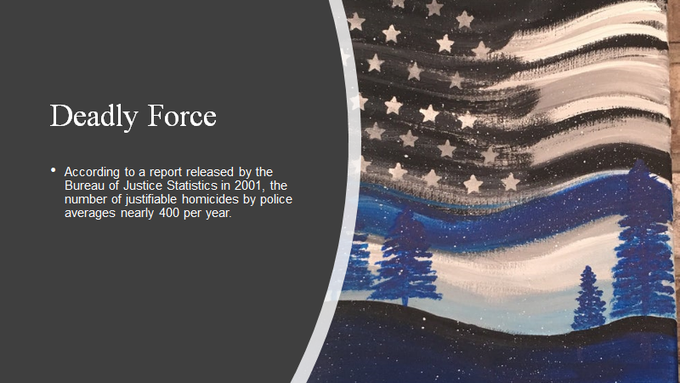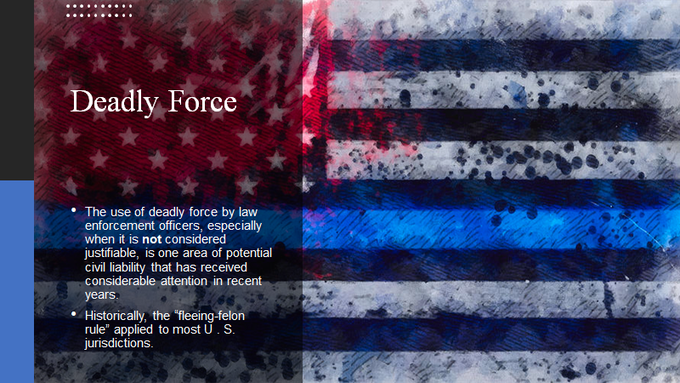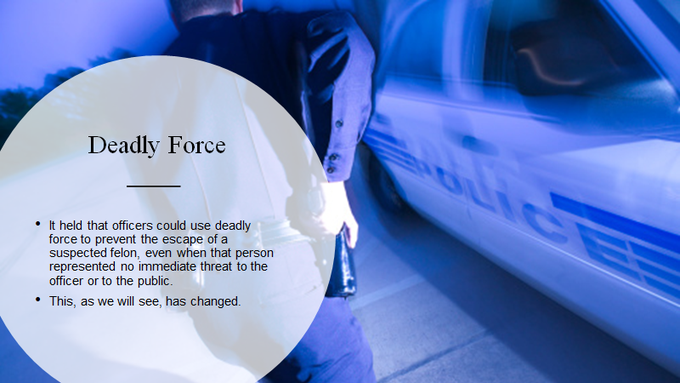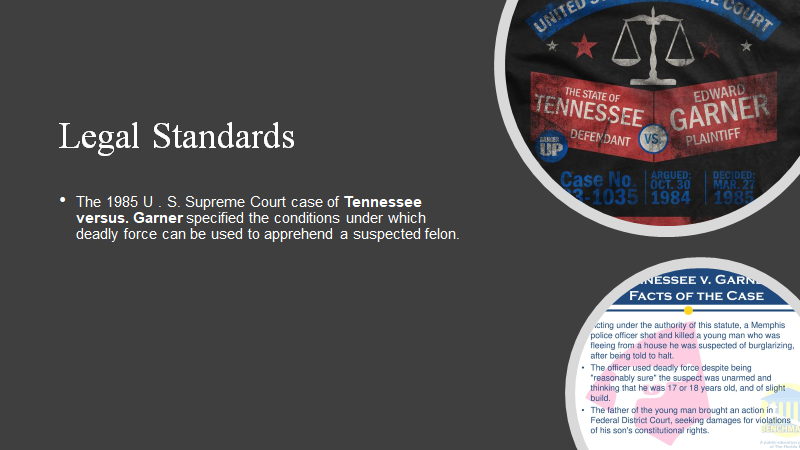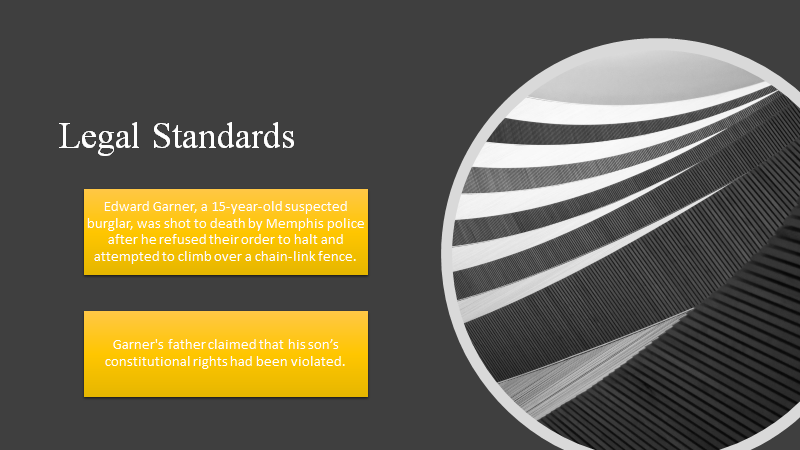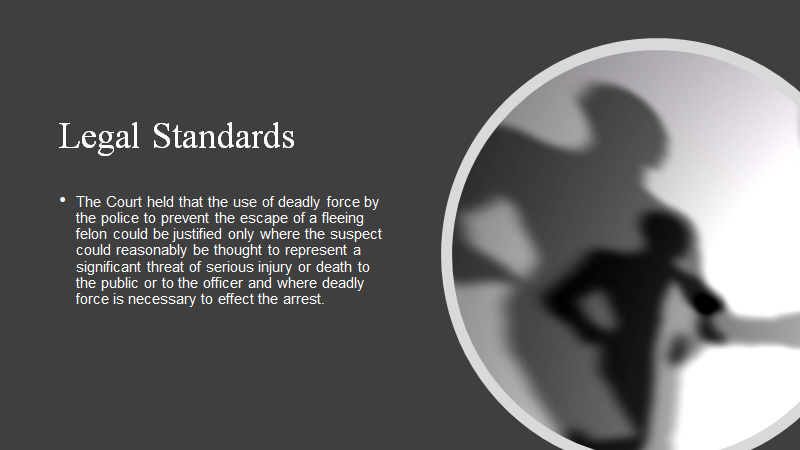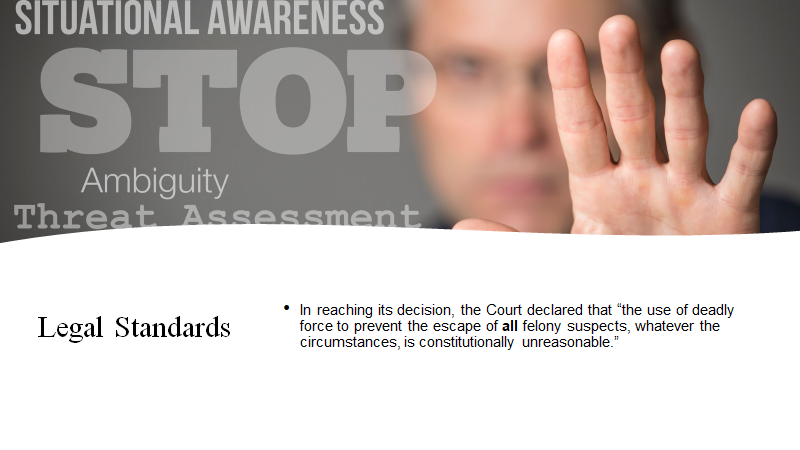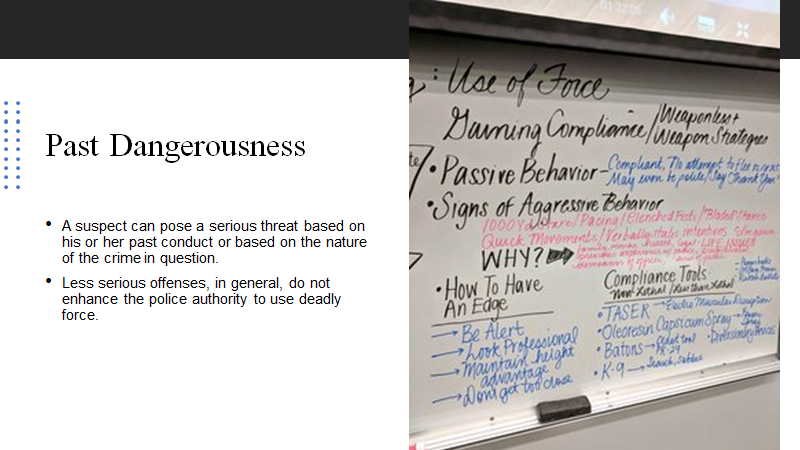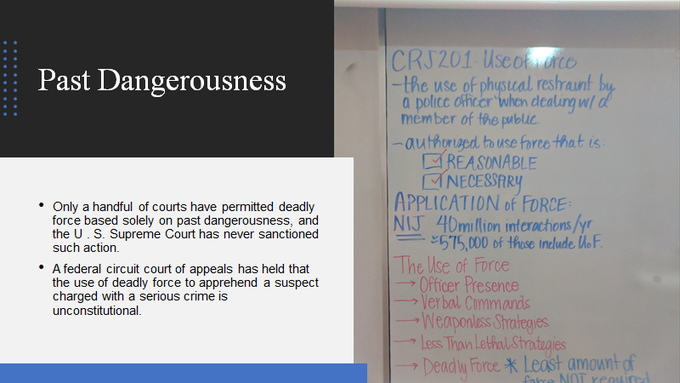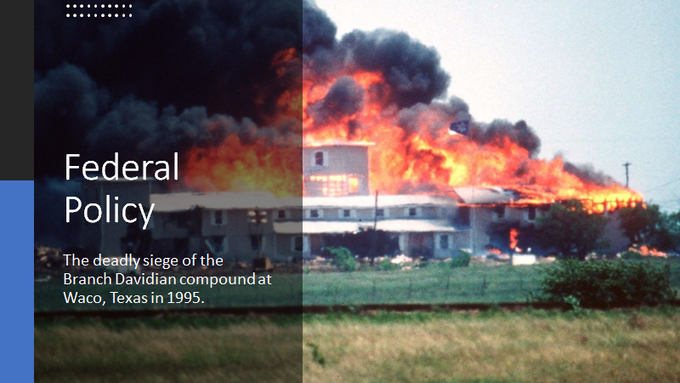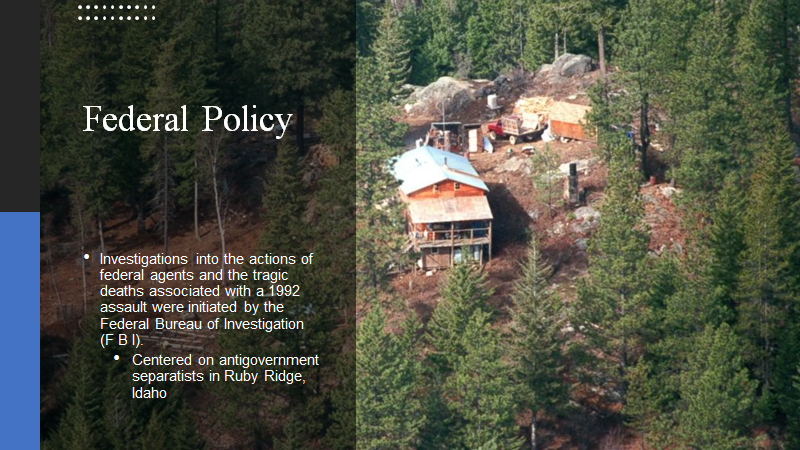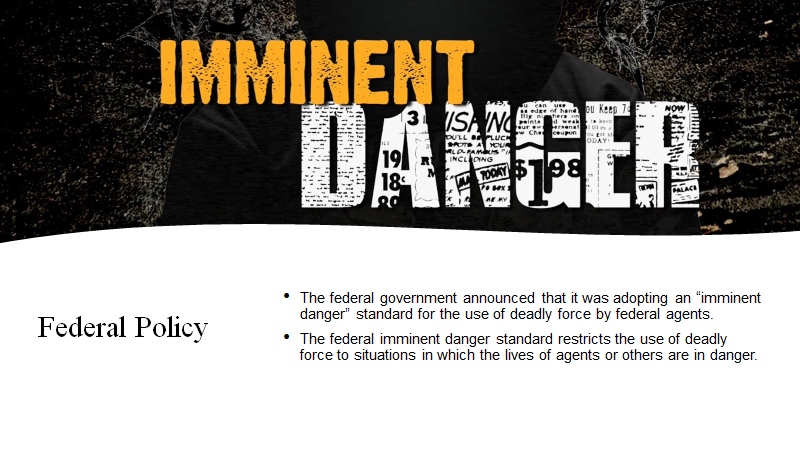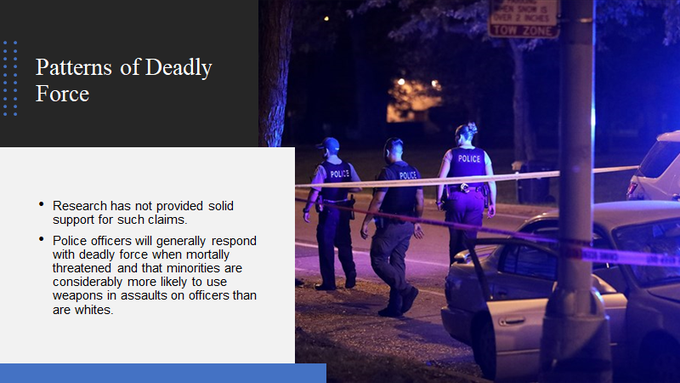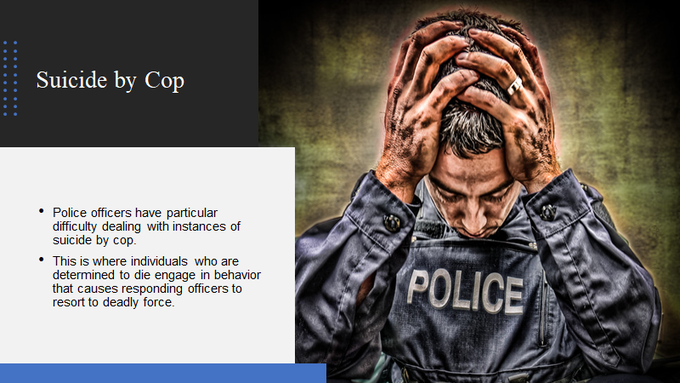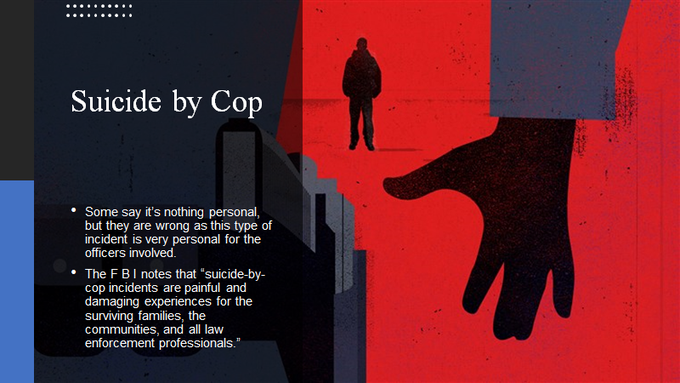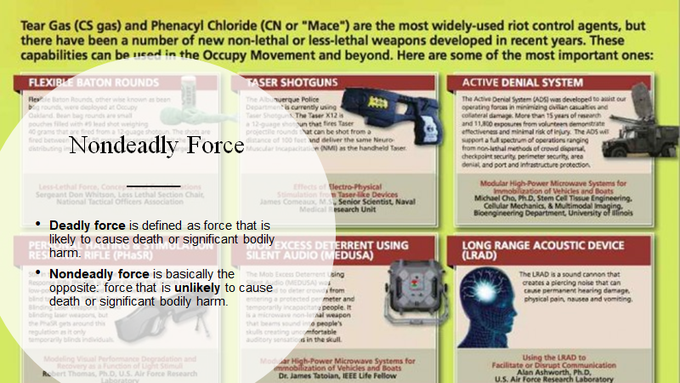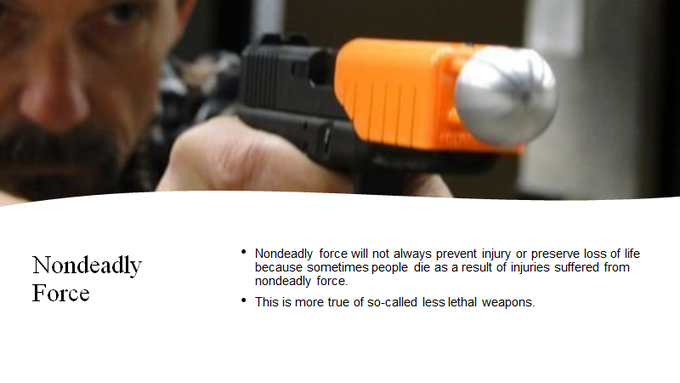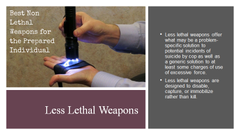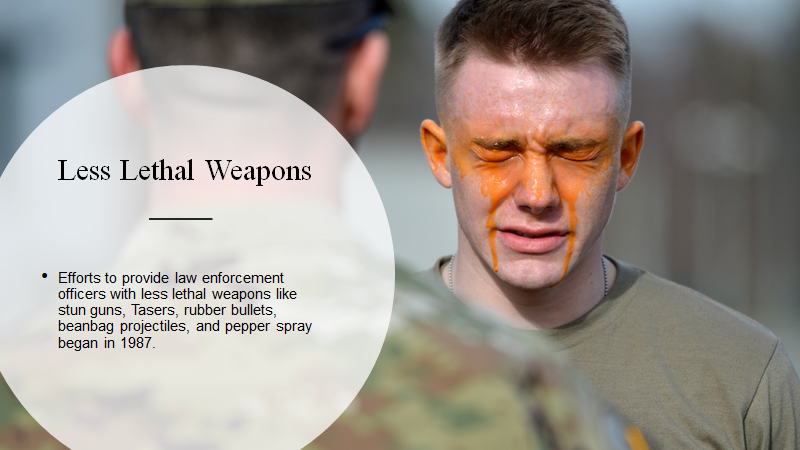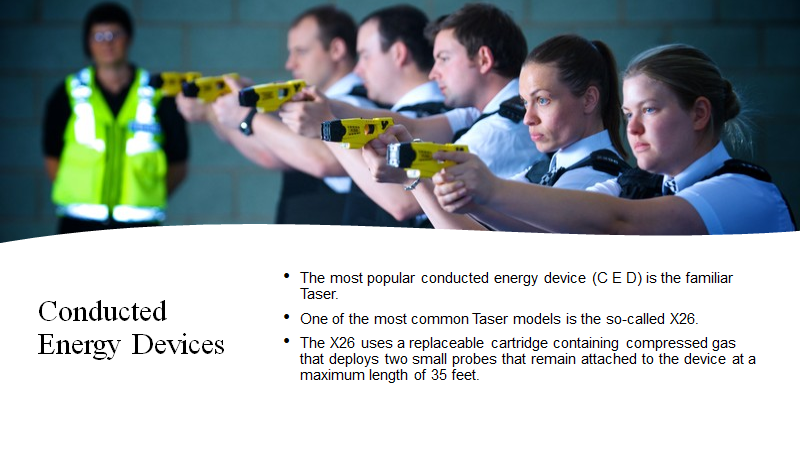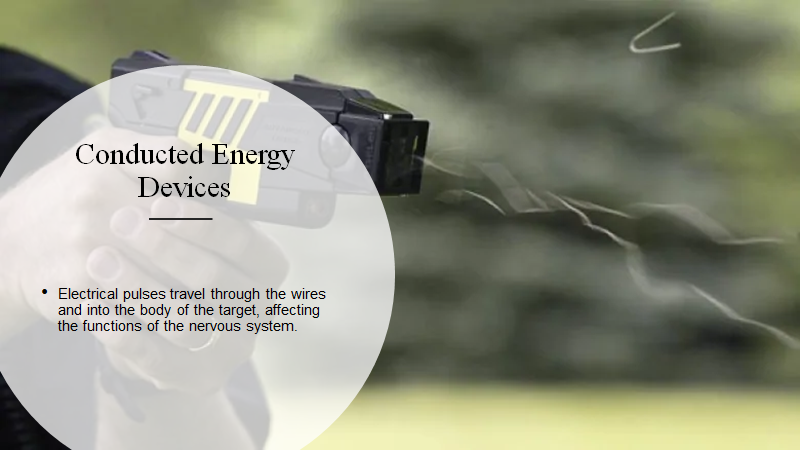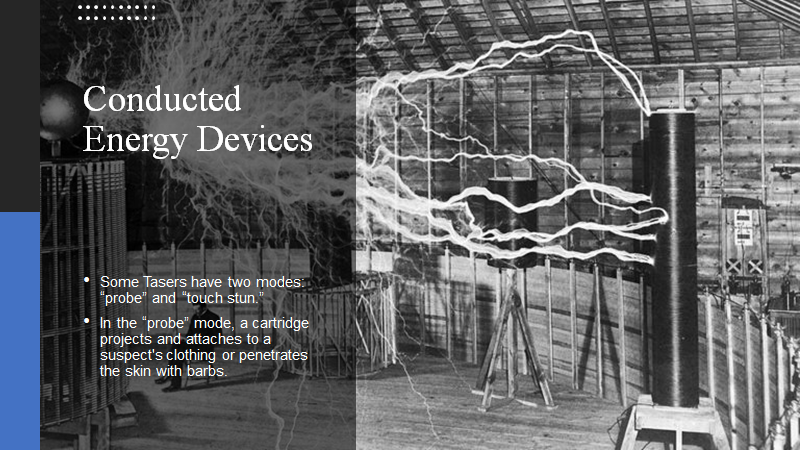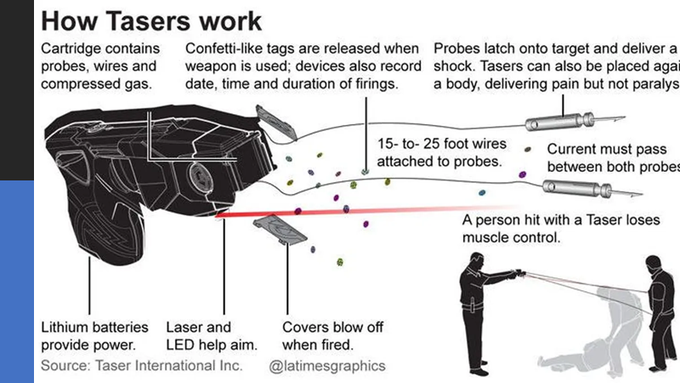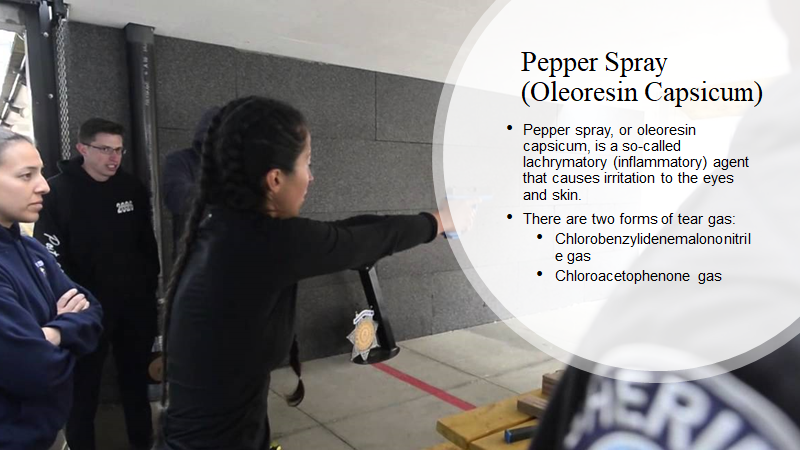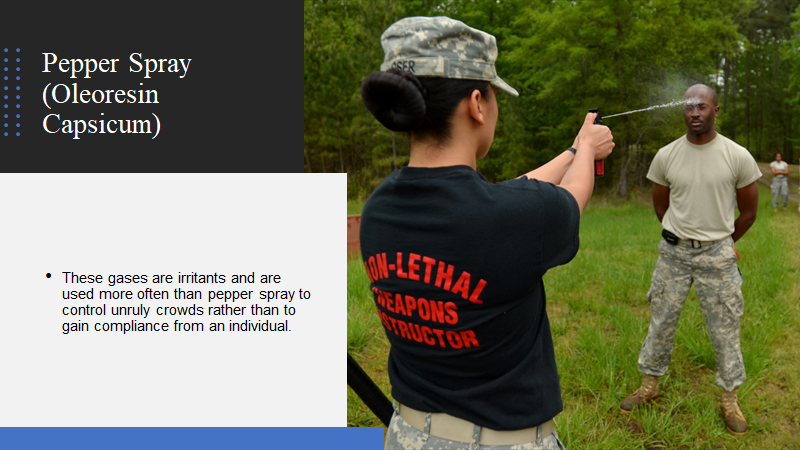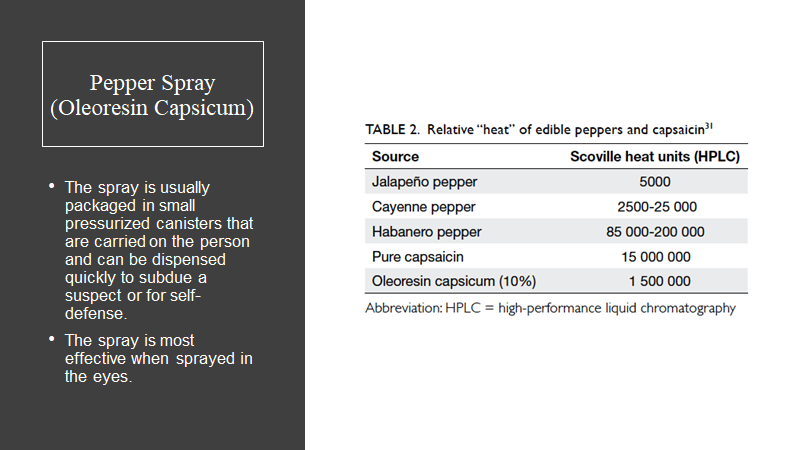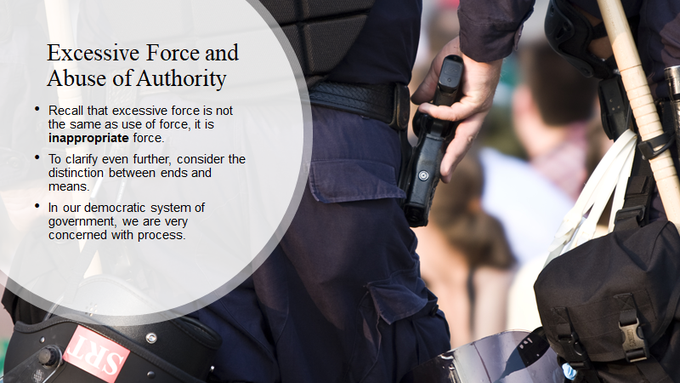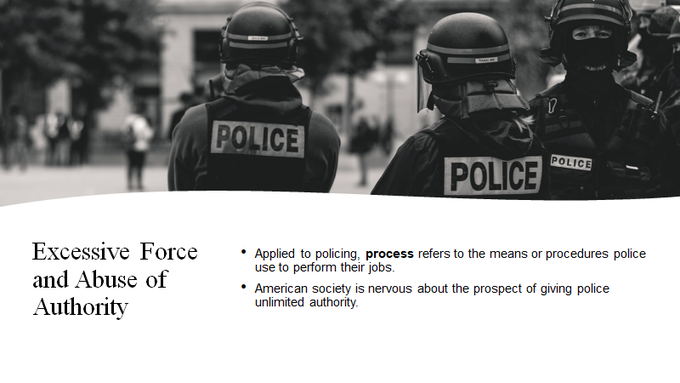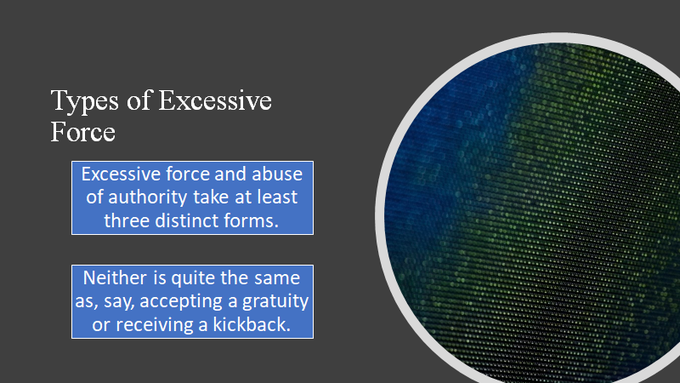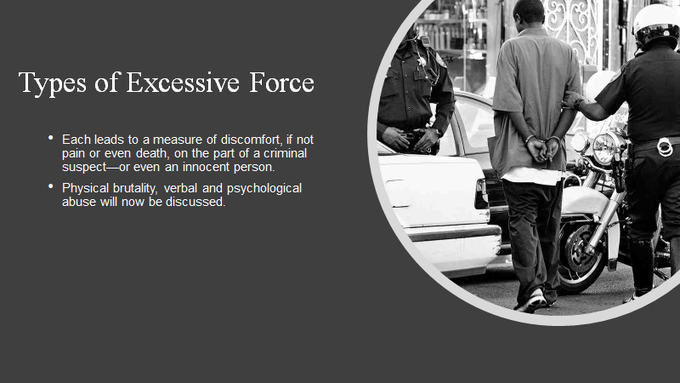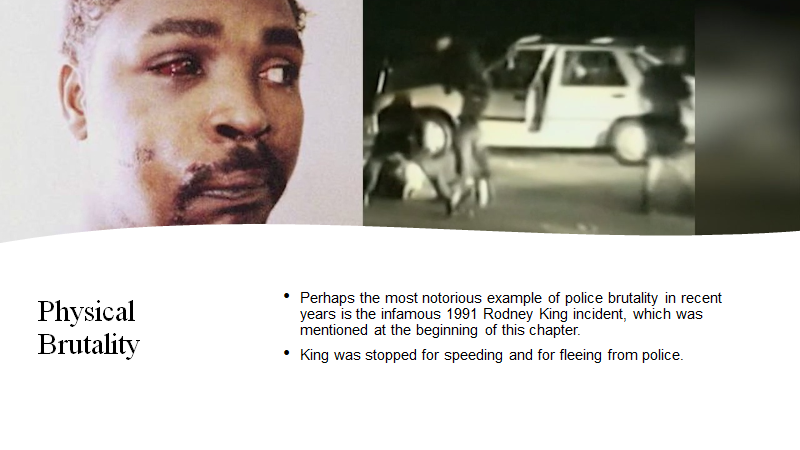Good afternoon friends, join me this afternoon at 4pm, cst, to discuss #ReasonableSuspicion and #UseOfForce.
THINKING ACTIVITY: Any "criminal activity" that an officer wishes to investigate can be ...
#CRJ201 #PoliceProcedure
THINKING ACTIVITY: Any "criminal activity" that an officer wishes to investigate can be ...
#CRJ201 #PoliceProcedure
Good afternoon, all
This afternoon we are going to take a look at #PoliceProcedure, specifically the aspects of investigative detention.
I welcome all feedback #CRJ201
This afternoon we are going to take a look at #PoliceProcedure, specifically the aspects of investigative detention.
I welcome all feedback #CRJ201
Let& #39;s start with a thinking challenge put together by @frontlinepbs, can you spot the illegal police stop?
POLICE STOP #01: The indiscriminate check-point:
#CRJ201 #PoliceProcedure
POLICE STOP #01: The indiscriminate check-point:
#CRJ201 #PoliceProcedure
Based on the information above, is the POLICE STOP #01: The indiscriminate check-point a legal stop?
#CRJ201 #PoliceProcedure
#CRJ201 #PoliceProcedure
Let& #39;s start with a thinking challenge put together by @frontlinepbs, can you spot the illegal police stop?
POLICE STOP #02: The Robbery In Progress:
#CRJ201 #PoliceProcedure
POLICE STOP #02: The Robbery In Progress:
#CRJ201 #PoliceProcedure
Based on the information above, is the POLICE STOP #02: Robbery In Progress a legal stop?
#CRJ201 #PoliceProcedure
#CRJ201 #PoliceProcedure
Let& #39;s start with a thinking challenge put together by @frontlinepbs, can you spot the illegal police stop?
POLICE STOP #03: Footprints In The Desert:
#CRJ201 #PoliceProcedure
POLICE STOP #03: Footprints In The Desert:
#CRJ201 #PoliceProcedure
Based on the information above, is the POLICE STOP #03: Footprints In The Desert a legal stop?
#CRJ201 #PoliceProcedure
#CRJ201 #PoliceProcedure
Let& #39;s start with a thinking challenge put together by @frontlinepbs, can you spot the illegal police stop?
POLICE STOP #04: The high crime area
#CRJ201 #PoliceProcedure
POLICE STOP #04: The high crime area
#CRJ201 #PoliceProcedure
Based on the information above, is the POLICE STOP #04: The High Crime Area a legal stop?
#CRJ201 #PoliceProcedure
#CRJ201 #PoliceProcedure
To make an investigative detention, an officer must have #ReasonableSuspicion
#CRJ201 #PoliceProcedure
#CRJ201 #PoliceProcedure
Reasonable suspicion has been defined by the United States Supreme Court as "the sort of common-sense conclusion about human behavior upon which practical people . . . are entitled to rely."
#CRJ201 #PoliceProcedure
#CRJ201 #PoliceProcedure
Reasonable Suspicion is when an officer has knowledge of specific facts that would lead that officer to reasonably suspect that a person is involved in criminal activity
#CRJ201 #PoliceProcedure
#CRJ201 #PoliceProcedure
Further, it has defined reasonable suspicion as requiring only something more than an "unarticulated hunch." It requires facts or circumstances that give rise to more than a bare, imaginary, or purely conjectural suspicion
#CRJ201 #PoliceProcedure
#CRJ201 #PoliceProcedure
The officer may stop and briefly detain the individual for questioning, even without probable cause for arrest
#CRJ201 #PoliceProcedure
#CRJ201 #PoliceProcedure
The terms probable cause and reasonable suspicion are often confused and misused.
#CRJ201 #PoliceProcedure
#CRJ201 #PoliceProcedure
While both have to do with a police officer& #39;s overall impression of a situation, the two terms have different repercussions on a person& #39;s rights, the proper protocol and the outcome of the situation
#CRJ201 #PoliceProcedure
#CRJ201 #PoliceProcedure
Reasonable suspicion is a step before probable cause. At the point of reasonable suspicion, it appears that a crime may have been committed
#CRJ201 #PoliceProcedure
#CRJ201 #PoliceProcedure
The situation escalates to probable cause when it becomes obvious that a crime has most likely been committed.
#CRJ201 #PoliceProcedure
#CRJ201 #PoliceProcedure
THINKING CHALLENGE: The fine line from when a crime may have been committed to most likely has been committed is obvious, universally agreed upon
#CRJ201 #PoliceProcedure
#CRJ201 #PoliceProcedure
THINKING CHALLENGE: An investigatory detention is commonly referred to as ...
#CRJ201 #PoliceProcedure
#CRJ201 #PoliceProcedure
An officer can stop a suspect for a brief investigative detention even without specific cause for arrest if the officer has knowledge of facts that reasonably lead one to believe the suspect is involved in criminal activity
#CRJ201 #PoliceProcedure
#CRJ201 #PoliceProcedure
An officer can stop a suspect for a brief investigative detention even without specific cause for arrest if the officer has identified themselves as a police officer and makes reasonable inquiries into a suspect& #39;s conduct
#CRJ201 #PoliceProcedure
#CRJ201 #PoliceProcedure
An officer can stop a suspect for a brief investigative detention even without specific cause for arrest if the suspect& #39;s response to being stopped does not relieve any suspicions
#CRJ201 #PoliceProcedure
#CRJ201 #PoliceProcedure
An officer can frisk a suspect if that officer has knowledge of facts that reasonably believe that the suspect is armed or otherwise dangerous to the officer or others
#CRJ201 #PoliceProcedure
#CRJ201 #PoliceProcedure
It is important to note, that justifying a stop requires "reasonable suspicion" based on objective facts and the logical conclusions that the officer& #39;s experience enables them to draw from those facts
#CRJ201 #PoliceProcedure
#CRJ201 #PoliceProcedure
But this is where we really have to examine the idea of what is reasonable.
#CRJ201 #PoliceProcedure
#CRJ201 #PoliceProcedure
THINKING CHALLENGE: What are some common ways that a police officer may view facts differently than a citizen?
#CRJ201 #PoliceProcedure
#CRJ201 #PoliceProcedure
Facts that are innocent, individually, but when considered together in the light of an officer& #39;s experience may provides grounds for a stop
#CRJ201 #PoliceProcedure
#CRJ201 #PoliceProcedure
Pieced together facts may be part of a larger profile, but it not good practice to rely mechanically on a profile. It must always be articulated how the & #39;whole picture& #39; lead a reasonable officer to believe a crime had been committed
#CRJ201 #PoliceProcedure
#CRJ201 #PoliceProcedure
THINKING CHALLENGE: What time limit should be set for a Terry Stop / Investigation Detention in which there is not already probable cause?
#CRJ201 #PoliceProcedure
#CRJ201 #PoliceProcedure
THINKING CHALLENGE: An officer may take an individual away from the place that he/she was first stopped
#CRJ201 #PoliceProcedure
#CRJ201 #PoliceProcedure
THINKING CHALLENGE: If nothing occurs on the stop to lead the officer to move from reasonable suspicion to probable cause, the officer must allow the individual on their way
#CRJ201 #PoliceProcedure
#CRJ201 #PoliceProcedure
A frisk based on reasonable suspicion, a terry frisk, must NOT be a full search
#CRJ201 #PoliceProcedure
#CRJ201 #PoliceProcedure
A terry frisk must be a carefully limited search of the suspect& #39;s outer clothing, aimed at discovering weapons
#CRJ201 #PoliceProcedure
#CRJ201 #PoliceProcedure
THINKING CHALLENGE: If an officer detects an object that feels like it is or could be a weapon, the officer may seize it
#CRJ201 #PoliceProcedure
#CRJ201 #PoliceProcedure
The terry frisk includes other types of protective conduct, such as requesting a suspect to unclench closed fists or to raise baggy clothing.
#CRJ201 #PoliceProcedure
#CRJ201 #PoliceProcedure
THINKING CHALLENGE: An officer has reasonable belief of criminal activity & that the suspect is armed, the officer has identified themselves, making reasonable inquiries ... it is UP to the suspect to dispel any feelings of dangerousness
#CRJ201 #PoliceProcedure
#CRJ201 #PoliceProcedure
Probable cause means that a reasonable person would believe that a crime was in the process of being committed, had been committed, or was going to be committed.
#CRJ201 #PoliceProcedure
#CRJ201 #PoliceProcedure
Probable cause is enough for a search or arrest warrant. It is also enough for a police officer to make an arrest if he sees a crime being committed.
#CRJ201 #PoliceProcedure
#CRJ201 #PoliceProcedure
Police use of force is defined as the use of physical restraint by a police officer when dealing with a member of the public
#CRJ201 #MoraineValley #CRJ201UoF
#CRJ201 #MoraineValley #CRJ201UoF
Most officers are trained in the use of force and typically encounter numerous situations during their careers when the use of force is appropriate
#CRJ201 #MoraineValley #CRJ201UoF
#CRJ201 #MoraineValley #CRJ201UoF
Force may involve
~hitting;
~holding or restraining;
~pushing;
~choking;
~threatening with or using a baton, a flashlight, or chemical or pepper spray;
~restraining with a police dog;
~using a Taser;
~or threatening with or using a gun.
#CRJ201 #MoraineValley #CRJ201UoF
~hitting;
~holding or restraining;
~pushing;
~choking;
~threatening with or using a baton, a flashlight, or chemical or pepper spray;
~restraining with a police dog;
~using a Taser;
~or threatening with or using a gun.
#CRJ201 #MoraineValley #CRJ201UoF
THINKING CHALLENGE: There is an epidemic of excessive force throughout American policing.
#CRJ201 #MoraineValley #CRJ201UoF
#CRJ201 #MoraineValley #CRJ201UoF
Whether the use of excessive force is aberrant behavior on the part of an individual officer or is the practice of an entire law enforcement agency, both the law and public opinion generally condemn it.
#CRJ201 #MoraineValley #CRJ201UoF
#CRJ201 #MoraineValley #CRJ201UoF
Thank you for the @PoliceFound for an excellent Use of Force Infographic that we will be referring to extensively through the duration of this discussion
#CRJ201 #MoraineValley #CRJ201UoF #PoliceFoundation
#CRJ201 #MoraineValley #CRJ201UoF #PoliceFoundation
The use of excessive force and the excessive use of force may also be distinguished from the illegal use of force, which refers to situations in which the use of force by police violates a law or statute
#CRJ201 #MoraineValley #CRJ201UoF #PoliceFoundation
#CRJ201 #MoraineValley #CRJ201UoF #PoliceFoundation
Kenneth Adams, an expert in the use of force by police, notes that there is an important difference between the terms use of excessive force and the excessive use of force
#CRJ201 #MoraineValley #CRJ201UoF #PoliceFoundation
#CRJ201 #MoraineValley #CRJ201UoF #PoliceFoundation
THINKING CHALLENGE: There is a clear, bright line standard of when use of force becomes excessive.
#CRJ201 #MoraineValley #CRJ201UoF
#CRJ201 #MoraineValley #CRJ201UoF
Use of force and use of excessive force are not one and the same.
#CRJ201 #MoraineValley #CRJ201UoF #PoliceFoundation
#CRJ201 #MoraineValley #CRJ201UoF #PoliceFoundation
Untrained bystanders may fail to understand that what an officer did to apprehend a resistant suspect followed the police agency’s policy to the letter. Justifiable force is not applied arbitrarily.
#CRJ201 #MoraineValley #CRJ201UoF
#CRJ201 #MoraineValley #CRJ201UoF
More often than not, law enforcement agencies adopt use-of-force policies that are far more detailed and restrictive than the force continuums present
#CRJ201 #MoraineValley #CRJ201UoF
#CRJ201 #MoraineValley #CRJ201UoF
In a study reported in 2001, Alpert & Dunham found that the force factor, the level of force used by the police relative to the suspect’s level of resistance. is a key element to consider in attempting to reduce injuries
#CRJ201 #MoraineValley #CRJ201UoF
#CRJ201 #MoraineValley #CRJ201UoF
Police use weaponless tactics in approximately 80% of use-of-force incidents and that half of all use-of-force incidents involve merely grabbing or holding the
suspect.
#CRJ201 #MoraineValley #CRJ201UoF
suspect.
#CRJ201 #MoraineValley #CRJ201UoF
Who is most likely to experience police force? Perhaps not surprisingly, males, African-Americans, and younger people are most likely to experience force.
#CRJ201 #MoraineValley #CRJ201UoF
#CRJ201 #MoraineValley #CRJ201UoF
The nature of the contact is also associated with whether force is used. People whose contact was initiated by the police were much more likely to see force used.
#CRJ201 #MoraineValley #CRJ201UoF
#CRJ201 #MoraineValley #CRJ201UoF
Generally speaking, deadly force is force that is likely to cause death or significant bodily harm.
#CRJ201 #MoraineValley #CRJ201UoF
#CRJ201 #MoraineValley #CRJ201UoF
A 2018 study in the American Journal of Public Health found the mortality rate by police per 100,000 was:
~ 1.9 to 2.4 for black men,
~ 0.8 to 1.2 for Hispanic men and
~ 0.6 to 0.7 for white men.
#CRJ201 #MoraineValley #CRJ201UoF
~ 1.9 to 2.4 for black men,
~ 0.8 to 1.2 for Hispanic men and
~ 0.6 to 0.7 for white men.
#CRJ201 #MoraineValley #CRJ201UoF
The “fleeing-felon rule” held that officers could use deadly force to prevent the escape of a suspected felon, even when that person represented no immediate threat to the officer or to the public
#CRJ201 #MoraineValley #CRJ201UoF
#CRJ201 #MoraineValley #CRJ201UoF
The 1985 U.S. Supreme Court case of Tennessee v. Garner specified the conditions under which deadly force can be used to apprehend a suspected felon
#CRJ201 #MoraineValley #CRJ201UoF
#CRJ201 #MoraineValley #CRJ201UoF
A suspect can also pose a serious threat based on his or her past conduct or based on the nature of the crime in question. Less serious offenses, in general, do not enhance the police authority to use deadly force
#CRJ201 #MoraineValley #CRJ201UoF
#CRJ201 #MoraineValley #CRJ201UoF
Officers should avoid deadly force if too much time has elapsed between the crime and the use of deadly force.
#CRJ201 #MoraineValley #CRJ201UoF
#CRJ201 #MoraineValley #CRJ201UoF
Following investigations of the Branch Davidian compound at Waco, Texas, and Ruby Ridge, Idaho, the federal government announced that it was adopting an “imminent danger” standard for the use of deadly force by federal agents
#CRJ201 #MoraineValley #CRJ201UoF
#CRJ201 #MoraineValley #CRJ201UoF
Although relatively few police officers ever fire their weapons at suspects during the course of their careers, those who do may become embroiled in social, legal, and personal complications.
#CRJ201 #MoraineValley #CRJ201UoF
#CRJ201 #MoraineValley #CRJ201UoF
Police officers have particular difficulty dealing with instances of suicide by cop, in which individuals who are determined to die engage in behavior that causes responding officers to resort to deadly force
#CRJ201 #MoraineValley #CRJ201UoF
#CRJ201 #MoraineValley #CRJ201UoF
Deadly force as force that is likely to cause death or significant bodily harm. Non-deadly force is basically the opposite: force that is unlikely to cause death or significant bodily harm
#CRJ201 #MoraineValley #CRJ201UoF
#CRJ201 #MoraineValley #CRJ201UoF
In the 1989 case of Graham v. Connor,34 the U.S. Supreme Court declared that claims of excessive non-deadly force must be judged under the Fourth Amendment’s reasonableness clause.
#CRJ201 #MoraineValley #CRJ201UoF
#CRJ201 #MoraineValley #CRJ201UoF
The conducted energy device (CED) is more commonly known as the Taser
#CRJ201 #MoraineValley #CRJ201UoF
#CRJ201 #MoraineValley #CRJ201UoF
Medical examiners have attributed some Taser-related deaths to a condition known as excited delirium, an overdose of adrenaline that can occur in heated confrontations with the police.
#CRJ201 #MoraineValley #CRJ201UoF
#CRJ201 #MoraineValley #CRJ201UoF
Pepper spray, or oleoresin capsicum, is a so-called lachrymatory (inflammatory) agent that causes irritation to the eyes and skin.
#CRJ201 #MoraineValley #CRJ201UoF
#CRJ201 #MoraineValley #CRJ201UoF
Recall that excessive force is not the same as use of force.
Excessive force is inappropriate force
#CRJ201 #MoraineValley #CRJ201UoF
Excessive force is inappropriate force
#CRJ201 #MoraineValley #CRJ201UoF
We want police to control crime and preserve our liberty. But when the ends become more of a concern than the means, inappropriate or excessive force is a likely result.
#CRJ201 #MoraineValley #CRJ201UoF
#CRJ201 #MoraineValley #CRJ201UoF
Many incidents have changed how the police have used force, but one of the most critical is the Hollywood Shootout in which the LAPD was vastly out-gunned
https://youtu.be/aRLeVQsYxFA
https://youtu.be/aRLeVQsYx... href="https://twtext.com//hashtag/CRJ201"> #CRJ201 #MoraineValley #CRJ201UoF
https://youtu.be/aRLeVQsYxFA
I hope this look at Police Reasonable Suspicion & Use of Force was informative and broke down some common misconceptions. I appreciate learning that I need to be more careful with my wording!
#LearnSomethingNewEveryday
#LearnSomethingNewEveryday

 Read on Twitter
Read on Twitter